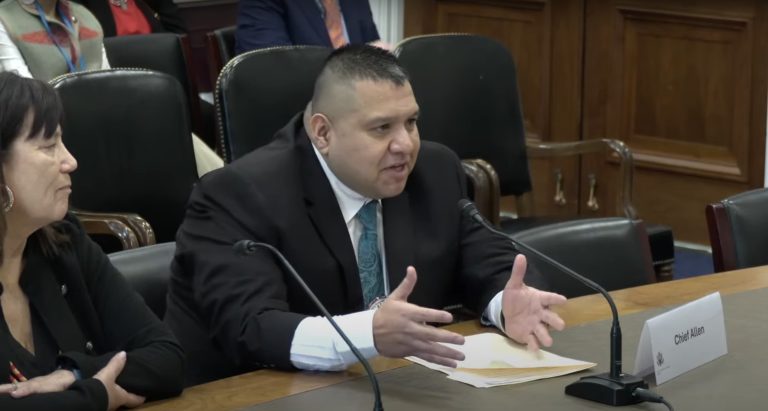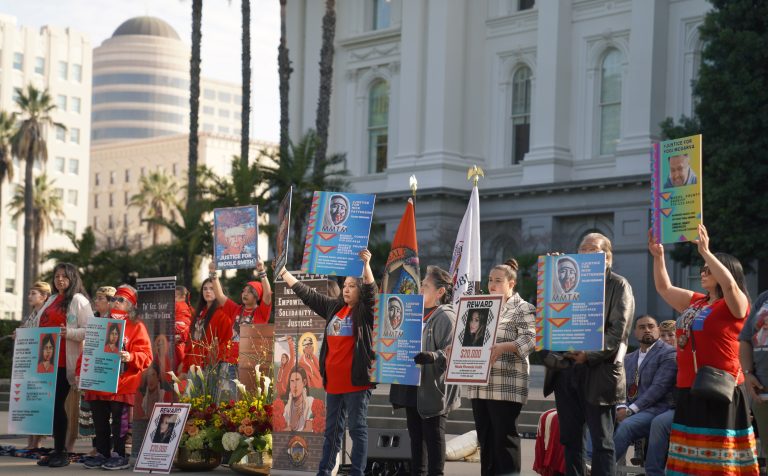Podcast: Play in new window | Download | Embed

Anchor: Antonia Gonzales
A First Nation is commemorating a painful anniversary. It’s been almost exactly a year since the remains of possibly more than 200 children were found at the site of a former residential school in British Columbia. As Dan Karpenchuk reports, Prime minister Justin Trudeau attended a memorial gathering in Kamloops, B.C.
Trudeau says the unmarked burial ground set off a reckoning for Canadians about the country’s history and relations with Indigenous people.
“I hear you. This is about remembering those we lost. This is about gathering and reflecting where we are, and mostly where we need to go altogether.”
It’s been a year since the unmarked graves of 215 children were found at the former school site. Trudeau added that this was a difficult year for survivors and their families and there is a long road ahead for reconciliation. Governor general Mary Simon also attended the gathering. She said what was known by most Indigenous people, the suffering and loss caused by the residential schools is now known by all.
“But you haven’t yet had time to grieve, to make peace in your hearts. I hope today contributes to that process of healing.”
Simon says the remains found has been called a discovery, but for survivors of the Indian residential schools, it’s a confirmation. Simon is the first Indigenous person in Canada to hold the office of Governor General. The chief of the Tk’emlúps te Secwépemc First Nation, Roseanne Casimir says she’s disappointed that the pope will not visit Kamloops when he comes to Canada next month. She’s still pleased that he will meet with other Indigenous people in Canada. Last month, Pope Francis apologized for the Catholic Church’s role in running the residential schools.
 The Lower Brule Sioux Tribe has filed a lawsuit against Lyman County in South Dakota for delaying a redistricting plan that would ensure the election of Native candidates to the county commission. The lawsuit alleges the delay prevents Lower Brule from electing two commissioners in the upcoming election. Instead, the Tribe will have one Native preferred candidate in 2024 and another in 2026. Victoria Wicks has more.
The Lower Brule Sioux Tribe has filed a lawsuit against Lyman County in South Dakota for delaying a redistricting plan that would ensure the election of Native candidates to the county commission. The lawsuit alleges the delay prevents Lower Brule from electing two commissioners in the upcoming election. Instead, the Tribe will have one Native preferred candidate in 2024 and another in 2026. Victoria Wicks has more.
Lyman County has had an at-large election process since 1992. That means candidates running for the five commissioner seats can live anywhere within the county. Lyman County contains part of the Lower Brule Reservation and has a Native population of 38 percent. With at-large elections, no Native candidate has ever succeeded in winning a seat on the county commission.
To avoid a lawsuit, Lyman County and Lower Brule agreed that the county must establish two commissioner positions chosen by Native voters. In October 2021, Lower Brule proposed five single-candidate districts, two of them Native-majority and three white-majority. According to plaintiffs, that scheme was legal under existing South Dakota law. But in February, the Lyman County Commission enacted an ordinance establishing just two voting districts, one white with three commissioners and one Native with two commissioners. And the commission voted to delay the changes until after the next election. Lyman County then went to the state legislature and asked for a change in state law to allow the two-district plan. When the Senate State Affairs committee took up the bill on March 2, Lower Brule Tribal Vice-Chairman Cody Russell testified against that change.
“Because county commissioner races are staggered, Native voters will not have the chance to elect the two representatives that we should have until 2026.”
Russell said Native voters would be denied full rights for four years. And he said that Lyman County’s plan defeats the intent of the Voting Rights Act.
“This plan divides the county into Native and white districts, segregating us and deepening existing tensions.”
Russell is one of the plaintiffs in the lawsuit. They are asking the federal court to stop the delay and allow the election this year of two Native commissioners.
Get National Native News delivered to your inbox daily. Sign up for our newsletter today.



